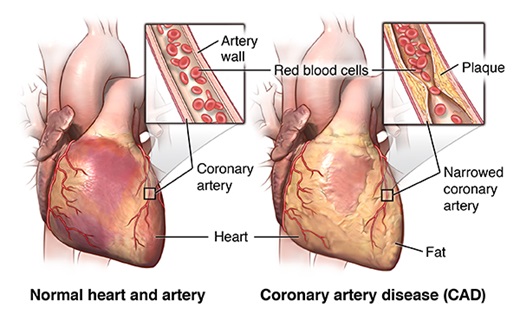Angioplasty is a procedure used to open blocked coronary arteries caused by coronary artery disease.

In fact, without open heart surgery, it restores blood flow to the heart muscle. Angioplasty can be performed in an emergency, such as a heart attack. Or, if your doctor strongly suspects heart disease, this procedure can be performed as an elective surgery. Angioplasty is also called percutaneous coronary artery bypass grafting (PCI).
For angioplasty, the doctor uses a local anesthetic to numb the area where a very small incision is made. A long, thin tube (catheter) is then inserted into a blood vessel and guided to a blocked coronary artery. The catheter has a small balloon at its tip. Once the catheter is in place, the balloon inflates in the narrow area of the heart artery. This plaque or blood clot presses against the sides of the artery, creating more space for blood to flow.

Fluoroscopy is used during surgery. Fluoroscopy is a special type of X-ray that looks like an X-ray film. This helps the doctor find the blockage in the arteries of the heart, because the contrast color moves in the arteries. This is called coronary angiography.
Angioplasty is often combined with the insertion of a small wire tube called a stent. The stent helps to open the artery and reduces the chance of it narrowing again. Most stents are covered with medicine to help keep the artery open (drug stents). Bare metal stents are rarely used.
Angioplasty can improve the symptoms of clogged arteries such as chest pain and shortness of breath. It is also often used during a heart attack to quickly open blocked arteries and reduce the amount of damage to the heart.
Angioplasty is used to treat the accumulation of fatty plaques in the blood vessels of the heart. This buildup is a type of heart disease known as atherosclerosis.
Angioplasty may be a treatment option for a person if:
He has tried medications or lifestyle changes, but these do not improve his heart health.
She has chest pain (angina) that is getting worse.
He has a heart attack. Angioplasty can quickly open a blocked artery and reduce damage to the heart.
It should be noted that it is not suitable for everyone. Depending on your heart disease and overall health, your doctor may determine that coronary artery bypass graft surgery is a better option than angioplasty.
Dangers
Although angioplasty is a less invasive procedure for opening clogged arteries than bypass surgery, it still has risks.
The most common risks of angioplasty are:
Narrowing of the artery
Re-narrowing of the artery When angioplasty is combined with the insertion of a drug-containing stent, there is a small risk that the treated artery will become blocked again. The risk of re-narrowing of the artery is higher when bare metal stents are used.
blood clotting
Blood clots can form inside the stents even after surgery. These clots can clog arteries and cause a heart attack. It is important to take aspirin with clopidogrel (Plavix), prasugrel (Effient) or other medicines that help reduce the risk of blood clots exactly as your doctor advised to reduce the chance of a clot forming on your stent.
Bleeding
The patient may have bleeding in the leg or arm where the catheter was inserted. This usually results in a simple bruising, but sometimes serious bleeding occurs and may require a blood transfusion or surgery.
Angioplasty can take up to several hours, depending on the severity and number of blockages and whether a complication occurs.
After surgery, the patient usually returns to work or normal routine the week after angioplasty.

